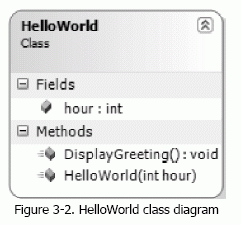Object-Oriented JavaScript: Part 2
[next]
Object-Oriented JavaScript: Part 2
[This is an excerpt from the book, Microsoft AJAX Library Essentials: Client-side ASP.NET AJAX 1.0 Explained, by Cristian Darie, Bogdan Brinzarea. Published by Packt Publishing Ltd., 2007
JavaScript Classes
Not only can JavaScript functions contain other functions, but they can also be instantiated. This makes JavaScript functions a good candidate for implementing the concept of a class from traditional object-oriented programming. This is very helpful feature indeed, because JavaScript doesn't support the notion of a class in the classic sense of the word. Functions can be instantiated using the newoperator, such as in this example:
This line of code effectively creates an object named myHelloWorld, which represents an instance of the ShowHelloWorld() function. When the object is instantiated, the function code is executed, so creating the object has the same effect as calling ShowHelloWorld() as in the previous examples.
Here are a few facts that will help you port your C# OOP knowledge into the JavaScript world:
|
We'll demonstrate these concepts by transforming the ShowHelloWorld() function that you saw earlier into a "real" class. We will:
|
[ Why are we changing the name of the function? Remember, OOP is a style of coding, not a list of technical requirements that a language must support. JavaScript is considered an OOP-capable language because it supports an object-based programming style. In the OOP paradigm, a class should represent an entity, and not an action. Since we intend now to use ShowHelloWorld() as a class, we are changing its name to one that reflects this purpose. ]
Once your new class is created, you use it just as you'd use a C# class. For example, this is how you'd create a new class instance, and call its DisplayGreeting() method:
A possible implementation of the HelloWorld class is the following:
This code can be tested online. The HelloWorld class is formed of the constructor code that initializes the hour field (this.hour), and of the DisplayGreeting() method—this.DisplayGreeting(). Fans of the ternary operator can rewrite the constructor using this shorter form, which also makes use of the object detection feature that was discussed in Chapter 2:
[ The ternary operator is supported both by C# and JavaScript. It has the form (condition ? valueA : valueB). If the condition is true, the expression returns valueA, otherwise it returns valueB. In the shown example, object detection is used to test if a value was supplied for the hour parameter. If it was not, the current hour is used instead. ]
Class Diagrams
JavaScript classes, just like C# or VB.NET classes, can be described visually using class diagrams. There are standards such as UML (Unified Modeling Language), that can be used to model classes and the relationships between them. In this book we'll show quite a few class diagrams using the notation used by Visual Studio 2005. Using this notation, the HelloWorld class shown earlier would be described as shown in Figure 3-2.

The diagrams to this book follow typical conventions for C# classes, which don't translate to JavaScript exactly. For example, the diagram in Figure 3-2 says that the HelloWorld class has an integer field named hour. However, JavaScript doesn't support specifying data types for variables or class fields. The data type of the field makes the diagram helpful in specifying the intended purpose and type of the field, but that type isn't used in the actual implementation of the class.
The diagram also mentions the HelloWorld() constructor, which receives an integer parameter. As you know, JavaScript doesn't support "real" constructors. However, by reading the diagram you can tell that the HelloWorld() function receives a parameter named hour, which is supposed to be an integer value.
Appendix A contains more details about the conventions used in class diagrams throughout this book.
[next]
URL:


 Digg This
Digg This Find a programming school near you
Find a programming school near you